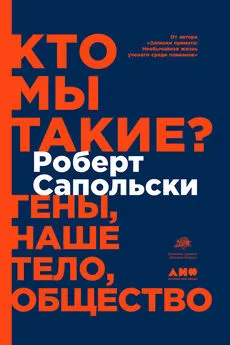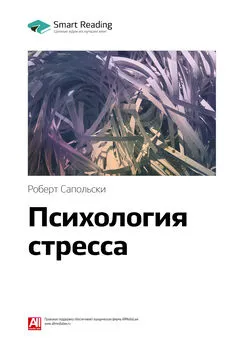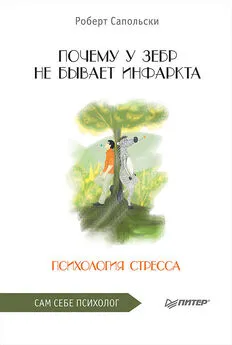Роберт Сапольски - Биология добра и зла. Как наука объясняет наши поступки
- Название:Биология добра и зла. Как наука объясняет наши поступки
- Автор:
- Жанр:
- Издательство:Альпина нон-фикшн
- Год:2019
- Город:Москва
- ISBN:978-5-0013-9051-0
- Рейтинг:
- Избранное:Добавить в избранное
-
Отзывы:
-
Ваша оценка:
Роберт Сапольски - Биология добра и зла. Как наука объясняет наши поступки краткое содержание
Биология добра и зла. Как наука объясняет наши поступки - читать онлайн бесплатно ознакомительный отрывок
Интервал:
Закладка:
896
S. W. Lee et al., “A Cultural Look at Moral Purity: Wiping the Face Clean,” Front Psych 6 (2015): 577.
897
H. Xu et al., “Washing the Guilt Away: Effects of Personal Versus Vicarious Cleansing on Guilty Feelings and Prosocial Behavior,” Front Hum Nsci 8 (2014): 97.
898
J. Ackerman et al., “Incidental Haptic Sensations Influence Social Judgments and Decisions,” Sci 328 (2010): 1712; см. также: M. V. Day and D. R. Bobocel, “The Weight of a Guilty Conscience: Subjective Body Weight as an Embodiment of Guilt,” PLoS ONE 8 (2013): e69546.
899
L. Williams and J. Bargh, “Experiencing Physical Warmth Promotes Interpersonal Warmth,” Sci 322 (2008): 606; Y. Kang et al., “Physical Temperature Effects on Trust Behavior: The Role of Insula,” SCAN 6 (2010): 507.
900
B. Briers et al., “Hungry for Money: The Desire for Caloric Resources Increases the Desire for Financial Resources and Vice Versa,” Psych Sci 17 (2006): 939; X. Wang и R. Dvorak, “Sweet Future: Fluctuating Blood Glucose Levels Affect Future Discounting,” Psych Sci 21 (2010): 183.
901
M. Anderson, “Neural Reuse: A Fundamental Organizational Principle of the Brain,” BBS 245 (2014); 245; G. Lakoff, “Mapping the Brain’s Metaphor Circuitry: Metaphorical Thought in Everyday Reason,” Front Hum Nsci (2014), doi:10.3389/fnhum.2014.00958.
902
P. Gourevitch, We Wish to Inform You That Tomorrow We Will Be Killed with Our Families (New York: Farrar, Straus and Giroux 2000); R. Guest, The Shackled Continent (Washington, DC: Smithsonian Books, 2004); G. Stanton, “The Rwandan Genocide: Why Early Warning Failed,” J African Conflicts and Peace Studies 1 (2009) 6; R. Lemarchand, “The 1994 Rwandan Genocide,” in Century of Genocide , ed. S. Totten and W. Parsons, 3rd ed. (Abingdon, UK: Routledge, 2009), p. 407.
903
S. Atran et al., “Sacred Barriers to Conflict Resolution,” Sci 317 (2007): 1039.
904
Цитата Саддама Хусейна взята из программы CNN, 6 ноября 1995 г.
905
D. Thornton, “Peter Robinson and Martin McGuinness Shake Hands for the First Time,” Irish Central , January 18, 2010, www.irishcentral.com/news/peter-robinson-and-martin-mcguinness-shake-hands-for-the-first-time-81957747-237681071.html.
906
J. Carlin, Playing the Enemy: Nelson Mandela and the Game That Made a Nation (New York: Penguin Press, 2008); D. Cruywagen, Brothers in War and Peace: Constand and Abraham Viljoen and the Birth of the New South Africa (Cape Town, South Africa: Zebra Press, 2014).
907
Проект «Невиновность», “DNA Exonerations in the United States,” www.innocenceproject.org/dna-exonerations-in-the-united-states/.
908
N. Schweitzer and M. Saks, “Neuroimage Evidence and the Insanity Defense,” Behav Sci & the Law 29 (2011): 4; A. Roskies et al., “Neuroimages in Court: Less Biasing Than Feared,” TICS 17 (2013): 99.
909
J. Marks, “A Neuroskeptic’s Guide to Neuroethics and National Security,” Am J Bioethics: Nsci 1 (2010): 4; A. Giridharadas, “India’s Use of Brain Scans in Courts Dismays Critics,” New York Times , September 15, 2008; A. Madrigal, “MRI Lie Detection to Get First Day in Court,” Wired , March 16, 2009.
910
S. Reardon, “Smart Enough to Die?” Nat 506 (2014): 284.
911
J. Monterosso et al., “Explaining Away Responsibility: Effects of Scientific Explanation on Perceived Culpability,” Ethics & Behav 15 (2005): 139; S. Aamodt, “Rise of the Neurocrats,” Nat 498 (2013): 298.
912
J. Rosen, “The Brain on the Stand,” New York Times Magazine , March 11, 2007.
913
К сноске: S. Lucas, “Free Will and the Anders Breivik Trial,” Humanist , Sept/Oct 2012, p. 36; J. Greene and J. Cohen, “For the Law, Neuroscience Changes Nothing and Everything,” Philosophical Transactions of the Royal Soc B, Biol Sci 359 (2004): 1775.
914
D. Robinson, Wild Beasts and Idle Humours: The Insanity Defense from Antiquity to the Present (Cambridge, MA: Harvard University Press, 1996).
915
S. Kadri, The Trial: Four Thousand Years of Courtroom Drama (New York: Random House, 2006).
916
J. Quen, “An Historical View of the M’Naghten Trial,” Bull of the History of Med 42 (1968): 43.
917
Особые мнения и О’Коннор, и Скалии процитированы в Roper v. Simmons , 545 U.S. 551 (2005).
918
L. Buchen, “Arrested Development,” Nat 484 (2012): 304.
919
Rosen, “Brain on the Stand.”
920
L. Mansnerus, “Damaged Brains and the Death Penalty,” New York Times , July 21, 2001, p. B9; M. Brower and B. Price, “Neuropsychiatry of Frontal Lobe Dysfunction in Violent and Criminal Behaviour: A Critical Review,” J Neurol, Neurosurgery and Psychiatry 71 (2001): 720.
921
M. Gazzaniga, “Free Will Is an Illusion, but You’re Still Responsible for Your Actions,” Chronicle of Higher Education , March 18, 2012; M. Gazzaniga, Who’s in Charge? Free Will and the Science of the Brain (New York: Ecco, 2012).
922
L. Steinberg et al., “Are Adolescents Less Mature Than Adults? Minors’ Access to Abortion, the Juvenile Death Penalty, and the Alleged APA ‘Flip-flop,’” Am Psychologist 64 (2009): 583.
923
S. Morse, “Brain and Blame,” Georgetown Law J 84 (1996): 527.
924
B. Libet, “Can Conscious Experience Affect Brain Activity?” J Consciousness Studies 10 (2003): 24; B. Libet et al., “Time of Conscious Intention to Act in Relation to Onset of Cerebral Activity (Readiness-Potential),” Brain 106 (1983): 623.
925
V. Ramachandran, The Tell-Tale Brain: A Neuroscientist’s Quest for What Makes Us Human (NY: Norton, 2012).
926
C. Dweck, Mindset: How You Can Fulfill Your Potential (London, UK: Constable & Robinson, 2012); C. Dweck, “Motivational Processes Affecting Learning,” Am Psychologist 41 (1986): 1040; S. Levy and C. Dweck, “Trait-Focused and Process-Focused Social Judgment,” Soc Cog (1998); 151; C. Mueller and C. Dweck, “Intelligence Praise Can Undermine Motivation and Performance,” JPSP 75 (1998): 33–52.
927
J. Cantor, “Do Pedophiles Deserve Sympathy?” CNN.com, June 21, 2012.
928
S. Morse, “Neuroscience and the Future of Personhood and Responsibility,” in Constitution 3.0: Freedom and Technological Change , ed. J. Rosen and B. Wittes (Washington, DC: Brookings Institution Press, 2011); J. Rosen, “Brain on the Stand” New York Times, March 11, 2007; S. Morse, “Brain Overclaim Syndrome and Criminal Responsibility: A Diagnostic Note,” Ohio State J Criminal Law 397 (2006): 397; все цитаты Морса в последующих абзацах приведены отсюда.
929
H. Bok, “Want to Understand Free Will? Don’t Look to Neuroscience,” Chronicle Review , March 23, 2012.
930
Morse, “Neuroscience and the Future of Personhood”; S. Nichols, “Experimental Philosophy and the Problem of Free Will,” Sci 331 (2011): 1401.
931
Morse, 2011, цит. соч.
932
Марвин Мински, цит. по: J. Coyne, “You Don’t Have Free Will,” Chronicle Review , March 23, 2012.
933
К сноске: J. Kaufman et al., “Brain-Derived Neurotrophic Factor–5-HTTLPR Gene Interactions and Environmental Modifiers of Depression in Children,” BP 59 (2006): 673.
934
J. Russell, Witchcraft in the Middle Ages (Ithaca, NY: Cornell University Press, 1972).
935
D. Dennett, Elbow Room: The Varieties of Free Will Worth Wanting (Cambridge, MA: MIT Press, 1984).
936
Greene and Cohen, “For the Law, Neuroscience Changes Nothing.”
937
M. Hoffman, The Punisher’s Brain: The Evolution of Judge and Jury (Cambridge, MA: Cambridge University Press, 2014).
938
K. Gospic et al., “Limbic Justice: Amygdala Involvement in Immediate Rejections in the Ultimatum Game,” PLoS ONE 9 (2011): e1001054; Buckholtz, “Neural Correlates of Third-Party Punishment.”
939
D. de Quervain et al., “The Neural Basis of Altruistic Punishment,” Sci 305 (2004): 1254; B. Knutson, “Sweet Revenge?” Sci 305 (2004): 1246.
940
К сноске: J. Bonnefon et al., “The Social Dilemma of Autonomous Vehicles,” Sci 352 (2016): 1573; J. Greene, “Our Driverless Dilemma,” Sci 352 (2016): 1514.
941
M. Fisher, “The Country Where Slavery Is Still Normal,” Atlantic , June 28, 2011; C. Welzel, Freedom Rising: Human Empowerment and the Quest for Emancipa tion (Cambridge: Cambridge University Press, 2013).
942
S. Pinker, The Better Angels of Our Nature: Why Violence Has Declined (New York: Penguin, 2011).
943
N. Elias, The Civilizing Process: Sociogenetic and Psychogenetic Investigations , rev. ed. (Malden, MA: Blackwell, 2000); W. Yang, “Nasty, Brutish, and Long,” New York , October 16, 2011.
944
S. Herman and D. Peterson, “Steven Pinker on the Alleged Decline of Violence,” Int Socialist Rev , November/December, 2012.
945
R. Douthat, “Steven Pinker’s History of Violence,” New York Times , October 17, 2011; J. Gray, “Delusions of Peace,” Prospect , October 2011; E. Kolbert, “Peace in Our Time: Steven Pinker’s History of Violence,” New Yorker , October 3, 2011; T. Cowen, “Steven Pinker on Violence,” Marginal Revolution , October 7, 2011.
946
C. Apicella et al., “Social Networks and Cooperation in Hunter-Gatherers,” Nat 481 (2012): 497.
947
S. Huntington, “Democracy for the Long Haul,” J Democracy 7 (1996): 3; T. Friedman, The Lexus and the Olive Tree (New York: Anchor Books, 1999).
948
Интервал:
Закладка:
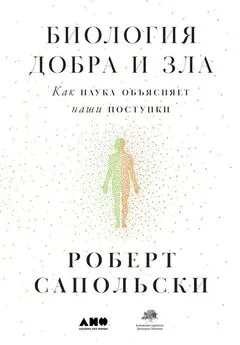
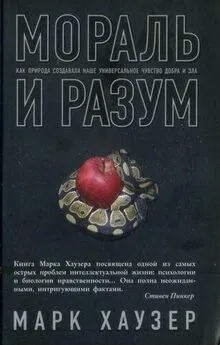
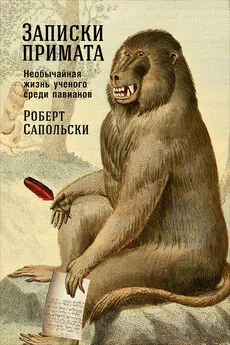


![Роберт Сапольски - Игры тестостерона и другие вопросы биологии поведения [litres]](/books/1074102/robert-sapolski-igry-testosterona-i-drugie-vopros.webp)
